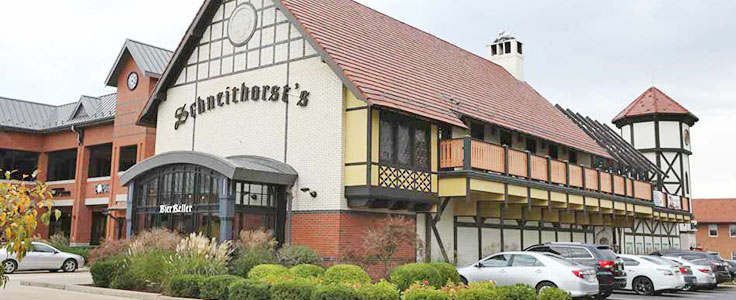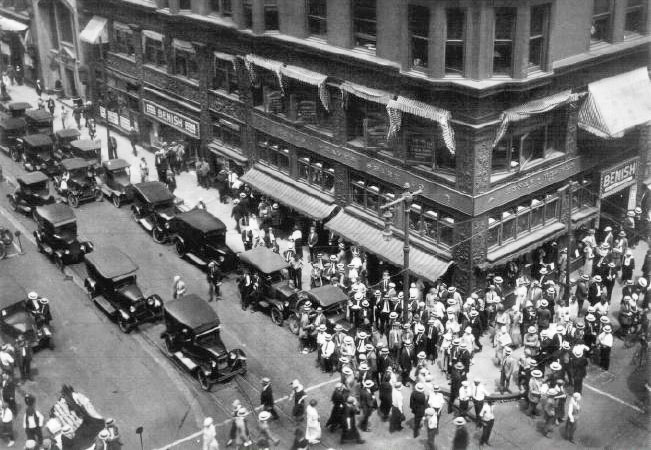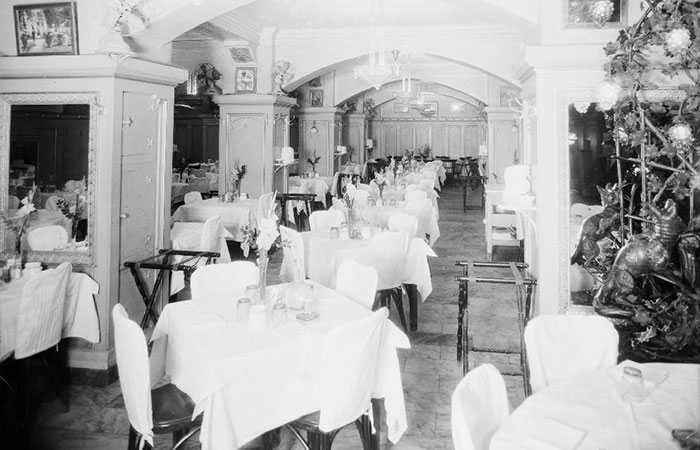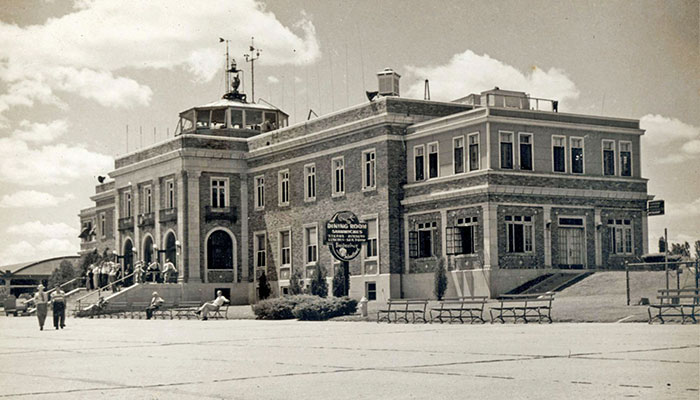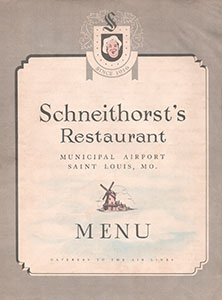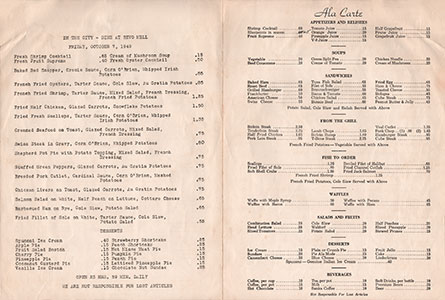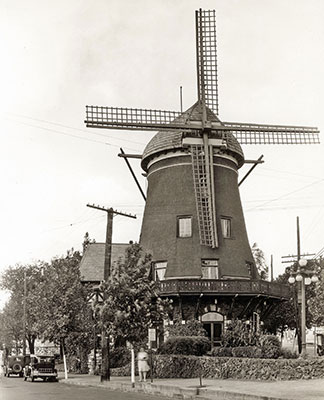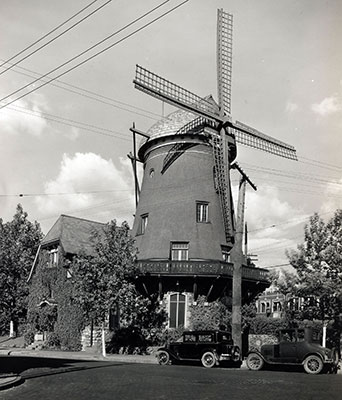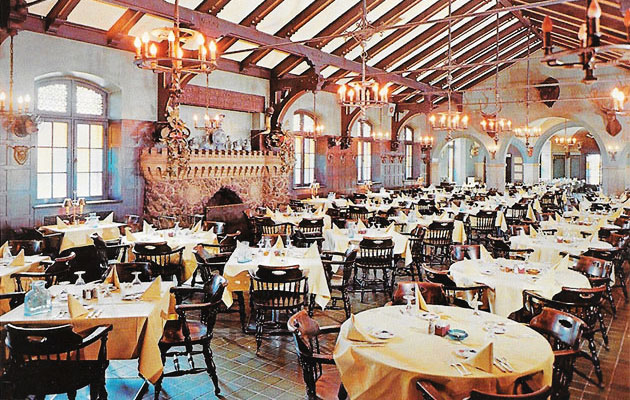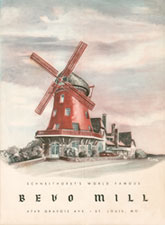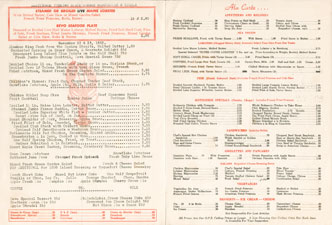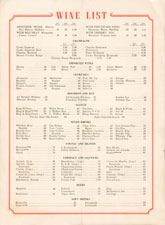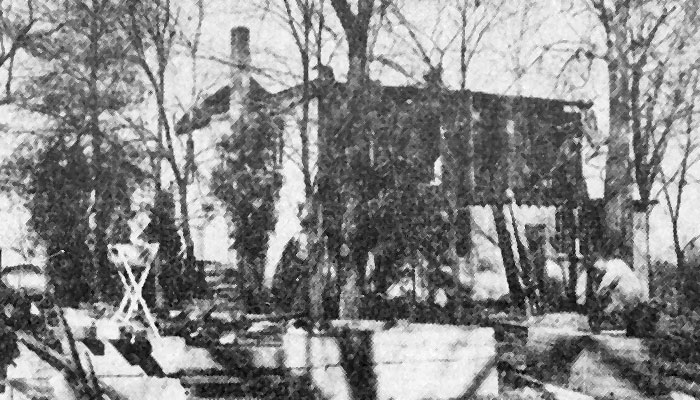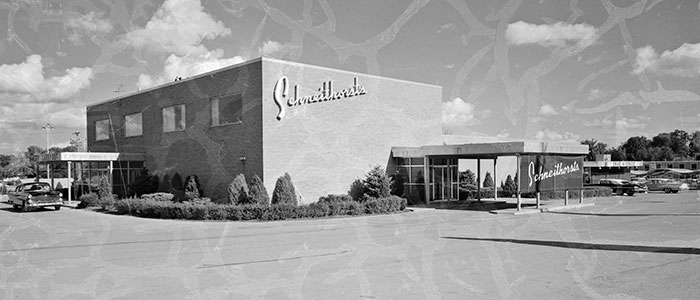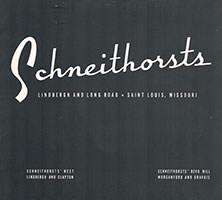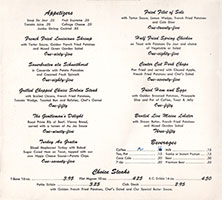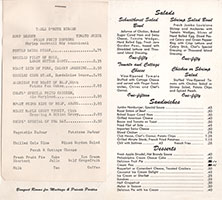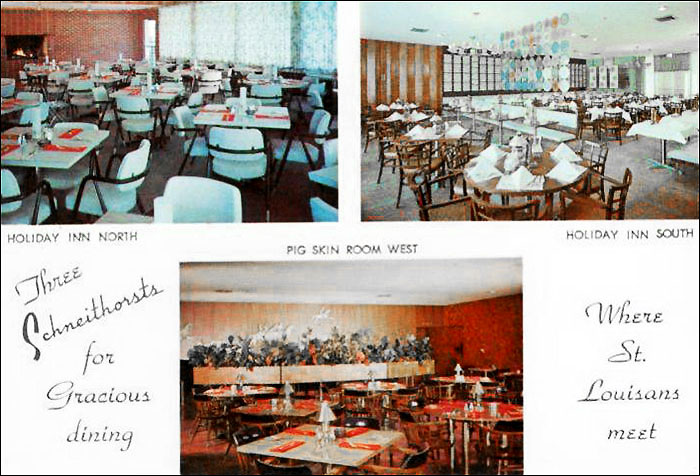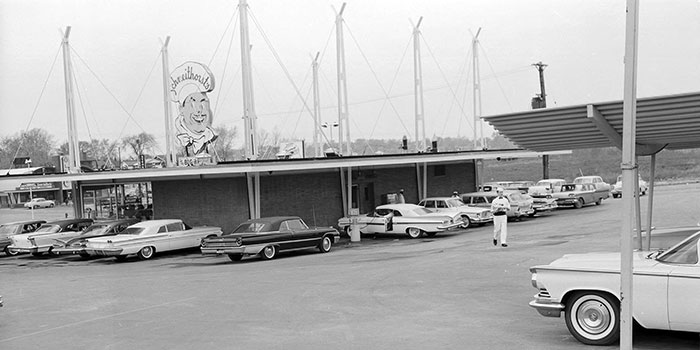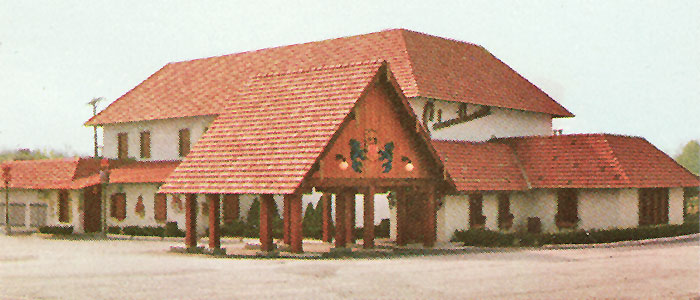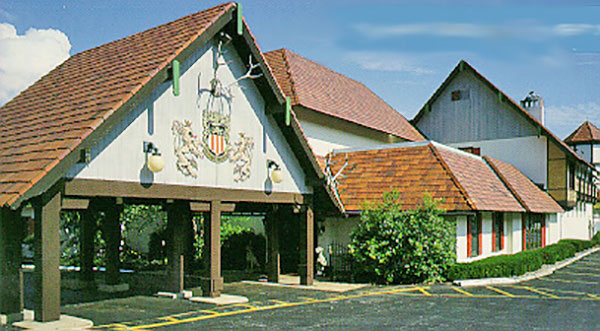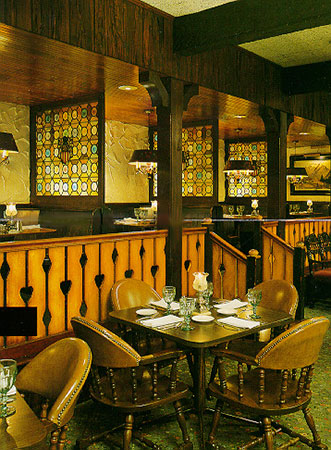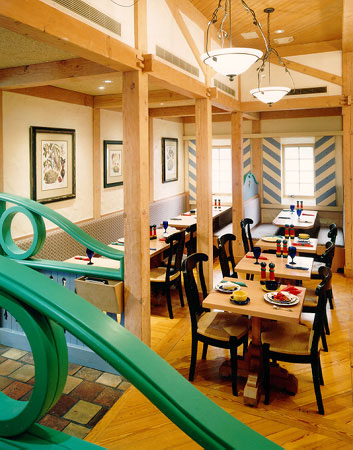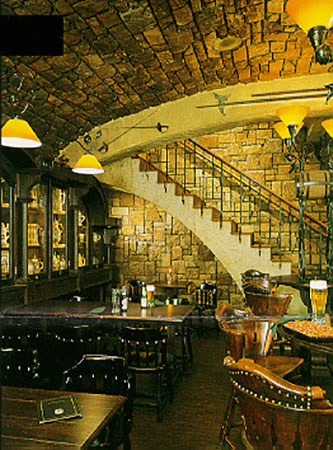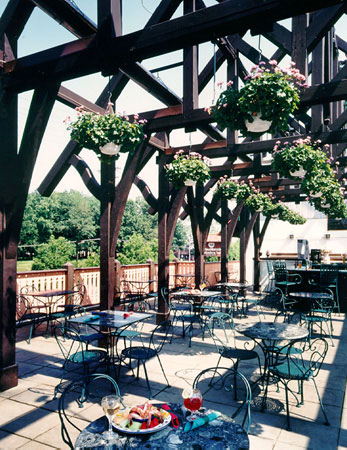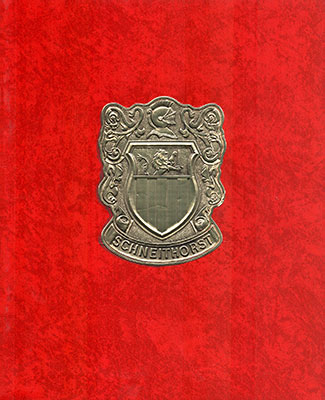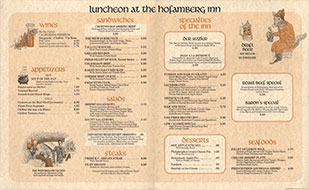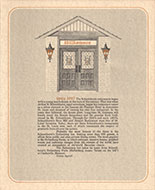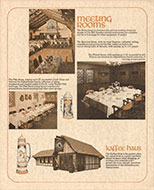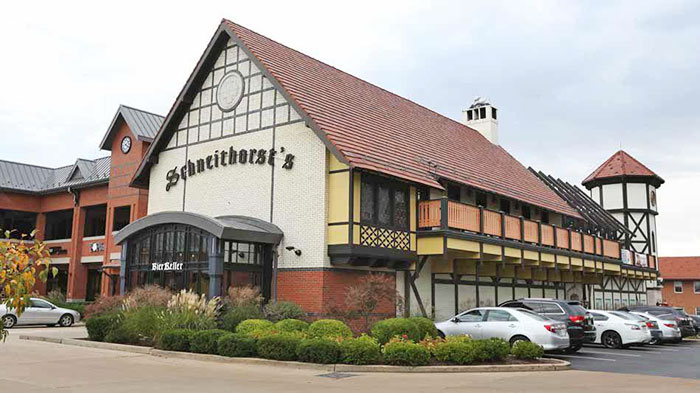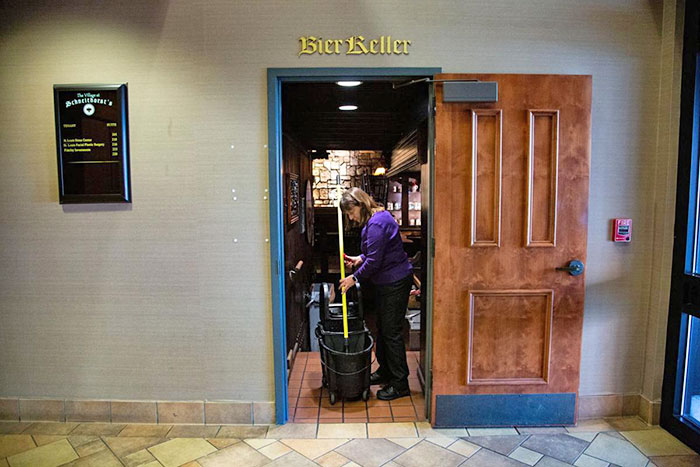|
Schneithorst's Arthur Bernard Schneithorst was born in St. Louis on June 16, 1884. His father, Henry F. Schneithorst, had immigrated to the United State from Germany in 1863 and settled in St. Louis where he married Arthur's mother, Emma J. Mohrhaus, a St. Louis native. Henry Schneithorst was in the produce business, selling fruit and vegetables on Main Street and then on Third Street. When he died in December on 1896, his wife took over the business, undoubtedly with the help of her son, Arthur. But Arthur Schneithorst had other plans. At age 17, he worked as a sliver steward at the old Planter's Hotel on Fourth Street. In August of 1912, Schneithorst and Bertha Zuber applied for a marriage license; they would be married for almost 35 years. By February of 1917, Schneithorst was managing the Chemical Building Bar Company at Olive and Eighth Streets. And by 1920, Arthur Schneithorst had joined the Benish Restaurant Company. * * * * *
Edward A. Benish was born in Austria. He
immigrated to the United States at age 19, working as a busboy in
New York City. He came to St. Louis and served as manager
of the Sunset Hills Country Club when it opened in 1912. By December
of 1915, he was managing the Tea Room at Scruggs – Vandervoort –
Barney. And in 1916, he formed the Benish Restaurant Company,
leasing space in the Chemical Building, at Olive and Eighth Streets.
The Benish complex opened with a bakeshop, a delicatessen, a soda fountain and a restaurant off of its main entrance on Olive Street, and a Gentlemen's Grill off of its Eighth Street entrance. By 1920, Benish Corner was booming.
Arthur Schneithorst was Benish's general manager and secretary-treasurer. When Edward Benish died in April of 1931, Schneithorst became the company's president. But the Benish Company was in financial trouble at the time of its founder's death, hit hard by the Great Depression. The company filed for bankruptcy in 1933. * * * * * On February 1, 1934, Arthur Schneithorst announced the opening of the Rock Grill – a seafood restaurant at 204 North Eighth Street. The announcement stated that "A. B. Schneithorst, formerly of Benish, is here to greet you . . . along with many former Benish employees." Billed as St. Louis’ Original Sea Food House, the Rock Grill featured lobster that could be plucked from a large tank in the dining room and oysters "opened right before you" at the oyster bar. The menu offered soft shell crab, frog legs, crappie, shrimp, catfish, whitefish, bluefish, lake trout and genuine crawfish soup. The Rock Grill thrived for almost 20 years, although towards the end the menu offered "a variety of fine foods and entrees to choose from," including French onion soup, corned beef and cabbage, and sauerbraten. The Rock Grill closed in 1953. * * * * * On April 19, 1939, the following article appeared in the St. Louis Star and Times:
Schneithorst took
over two venues at the airport – a more formal restaurant in the administration
building (then the terminal) and a more casual refreshment stand on
the ramp in front of the administration building.
The job of overseeing Schneithorst’s new airport project was given to his son, Arthur Bernard "Bud" Schneithorst, Jr. Bud Schneithorst was born in 1915. He graduated from Western Military Academy in 1931 and received an undergraduate degree from Washington University in 1935. There are conflicting reports as to whether he obtained his law degree from Washington University in 1939 or dropped out before graduating to join his father's business. In any event, the younger Schneithorst took over the airport restaurant in 1939, serving 500 meals daily with 17 employees. Within 10 years, he had 100 employees and did as much business in one month as he did in all of 1939.
The
administrative building restaurant – open "23 hours, 59 minutes
daily" – featured an extensive menu. Whole broiled Maine
lobster was available for 75¢ and "chicken in the rough," a half
fried chicken, was served with "gobs of shoestring potatoes, jug
honey and hot buttered rolls" for 60¢. In addition to serving meals in the administration building, Schneithorst's was the second largest airline-catering company in the world, preparing and delivering 700 meals dally. Its customers included Chicago and Southern, Eastern, American, Trans World and Mid-Continent Airlines. Individual menus were prepared for each airline. American Airlines passengers were served beef consomme, fried chicken, peach-cottage cheese, salad and strawberry shortcake. South-bound passengers on Chicago and Southern were served beef consomme, broiled lamb chops, brown potatoes, mixed salad and cherry cobbler. In 1953, Schneithorst's refreshment stand was removed in coordination with the construction of a new terminal on the south side of the airport. While the stand had served 200,000 customers the previous summer, it was the source of many paper cups, napkins and bags dropped on the ramp. And then in 1954, the Municipal Airport Commission recommended the city accept a high bid from the Missouri Sports Service Company for the food concession contract at the new terminal building. Schneithorst's was the second highest bidder. Schneithorst's Airport Restaurant closed on February 1, 1955. * * * * * The same year Arthur Schneithorst was awarded the contract for food service at the airport, he took over a landmark restaurant in south St. Louis. August A. Busch had opened the Bevo Mill at Gravois and Morganford in 1917. A series of owners had operated the restaurant from 1920 until the late 1930s, although Anheuser-Busch had retained title to the real estate. Arthur Schneithorst's wife Bertha had often eyed the restaurant in the shape of a Dutch mill with interest.
The Schneithorsts formally reopened the Bevo Mill on July 26, 1939. The building had been completely renovated and air conditioned. The dignified air of a Flemish hunting lodge was preserved in the main dining room, which was refinished in lighter tones and renamed the Holland Dining Room. A new cocktail lounge, known as the Yacht Club, was added in the basement, decorated in nautical style. Well over $50,000 was been spent on the remodeling. Schneithorst operated the Mill under a 10-year lease.
But Arthur Schneithorst didn't live to see the
end of that lease. He died on May 8, 1947 at the age of 62.
Bertha Schneithorst became manager of the Bevo Mill and its 70 employees. She also oversaw the Rock Grill and a cafeteria in the Knapp-Monarch Company's plant at 3501 Bent Ave, which her husband had operated. Her son, Bud Schneithorst, continued to operate the other family restaurant at the airport. Although her training in restaurant management had come entirely from observation, Mrs. Schneithorst remembered a great many admonitions from her husband, from not accepting a shipment of lobsters unless they were kicking vigorously to ways of keeping the customers from doing likewise.
In July of 1959, the Schneithorsts sold the Bevo Mill to Collins Enterprises. Arthur Schneithorst Jr. said his mother's retirement had been a factor leading to the sale. Bertha Schneithorst died on January 2, 1968. * * * * * On August 21, 1952, the St. Louis Post-Dispatch reported that Walter Wipke, the proprietor of Wipke's Grove, had died. Wipke lived above the widely known St. Louis County restaurant at the southeast corner of Lindbergh and Clayton, which he had operated for 30 years. Wipke's father, Fred W. Wipke, had bought the stucco-covered two-story building, which had been erected in 1840, from the William Dwyer family in 1895. For the first 55 years of its existence, it was a country general store and served as a gathering place for farmers of the surrounding region. Fred Wipke converted the building into a restaurant and saloon.
Walter Wipke's widow continued to run the
restaurant for a year after his death, after which it sat empty
until she sold it in December of 1954 to investor George H. Capps.
Capps demolished Wipke's Grove in February of 1955 and built a
restaurant on the site for Arthur Schneithorst.
Arthur Schneithorst's new restaurant, initially called Schneithorst's Drive-In and then Schneithorst's West, was opened at Lindbergh and Clayton in March of 1956.
The
one-and-two-story building was constructed in a contemporary
style popular at the time. The Stix Westroads building, completed
the year before, had a similar look. Sharply outlined in cubes and
straight lines, the structure featured only five windows, one a
10-foot expanse of glass in the main dining room. The main dining room on the first floor had a 160 person seating capacity. Contemporary in decor, it featured canvas-covered plaster walls and carpeting in shades of charcoal, red, black, turquoise and beige. Chairs were of white molded plastic. Adjoining the main dining room was an informal cocktail lounge and grill seating 100 persons. Its walls were paneled in walnut and pigskin, and decorated with three-dimensional brass figures depicting sports scenes. Pigskin also covered the floor. A small counter-service building adjoined the south end of the restaurant, providing 12 seats at a luncheon counter. At the south end of the complex Schneithorst's offered its new Tele-Tray service, described in an October 9, 1955 St. Louis Globe-Democrat article.
In late 1956, The Parkmoor would open a restaurant with drive-in speakers "down the street" at Lindbergh and Manchester. While Schneithorst's West's Tele-Tray service provided a casual, fast food option, its main dining room provided more leisurely dining, as demonstrated by a card placed on each table.
In February of 1957,
the first Holiday Inn in St. Louis opened on Lindbergh, just south
of Natural Bridge. Its administration building contained a
Schneithorst operated restaurant. There would eventually be
Schneithorst restaurants in seven St. Louis Holiday Inns and in the
Ramada Inn on Grand, between Forest Park and Market.
In October of 1958, Schneithorst's expanded it's drive-in concept, opening a restaurant at the southeast corner of Hampton and Wilson. The drive-in had a distinctive suspended roof, designed to eliminate columns. Bright lighting made the restaurant sparkle at night. The interior seated 68 diners in booths and 12 at counters, while the outdoor drive-in facilities accommodated 40 cars.
The new restaurant was branded Schneithorst's Big Bevo Drive-In, with another opening by November
of 1961 in the St. Charles Plaza Shopping Center on West Clay. The
St. Charles location would become J's Bevo Drive-In by 1965 and
would close by the late 1960s. The Hampton Avenue location was sold
in 1973 to its manager, Patrick James Murphy, and closed in 1979.
In 1967, the Schneithorst's building at
Lindbergh and Clayton received a dramatic makeover. Architect Robert
Elkington, who had designed the original contemporary structure,
remodeled the restaurant, inside and out, into a Bavarian eating
house. Schneithorst's West became Schneithorst’s Hofamberg Inn.
The Hofamberg Inn, which took its name from the Schneithorst Hofamberg Farm in Pike County, was always a work in progress, with a seemingly endless array of additions to the building and surrounding property. Early on, a coffee house was built south of the restaurant, replacing a portion of the drive-in facility. Eventually, drive-in service would be completely eliminated, with the Kaffee Haus remodeled and expanded in 1979 and 1996. In 1969, banquet rooms were added, along with a cocktail lounge called the Weinskeller. With its walls and ceiling faced in rough cut volcanic pumice, this area would eventually become the Bierkeller. By 1977, the Hofamberg Inn could accommodate more than 600 guests in three public and nine private dining rooms. The most popular was the Hofamberg Room, with its massive beams, polished woods and antiques. There was also the Bavarian Room, with its large fireplace, cathedral ceiling and chandeliers, the Walnut Room, featuring a collection of hunting and gun prints, and the Pike Room, featuring riding accessories and original St. Louis World’s Fair prints.
In 1995, an open-aired beer garden was
constructed above the Kaffee Haus. The Biergarten, with its eaved
wooden beams overheard, featured a menu of appetizers, sandwiches,
salads, burgers, nachos and German beers.
The Hofamberg Inn was the originator of the Sunday brunch in St. Louis. The brunch menu included a choice of juices, mixed fresh fruit, melons in season, scrambled eggs, hash browns, fried eggs, French toast, glazed apples, turkey hash, creamed chipped beef, sweetbreads, Canadian bacon, pork link sausage, chicken livers, pancakes with honey butter and fresh pastries.
The dinner menu featured
braised short ribs with
whipped Irish potatoes,
sauerbraten with
German potato pancakes and
applesauce, and sautéed medallions of pork tenderloin with glazed
apples. German specialties included Wiener Schnitzel a la Holstein
and a Bavarian platter with a combination of roast loin of pork and
pan-fried bratwurst and knackwurst, served with sweet-sour red
cabbage. Arthur Schneithorst's son, James Schneithorst, joined the business in 1964. The father-and-son team operated the business until Arthur Schneithorst died in 1994. That year, James Schneithorst Jr. took charge of operations. When James Schneithorst Sr. retired in 2002, his son took the business in a different direction. On April 30, 2002, the Hofamberg Inn was closed. The structure would be demolished to make way for a two-story building with boutique shops at street level and office space above. The adjacent Kaffee Haus, Bierkeller and Biergarten would remain open. "It's been an extremely difficult and wrenching decision to make," said James Schneithorst Jr. "By focusing our total efforts on the Kaffee Haus, Bierkeller lounge and outdoor Biergarten, we'll be able to maintain our high standards and continue to meet customer expectations.
"This is an exciting new era for
Schneithorst's. We are pleased to be able to sustain and enhance our
family's restaurant tradition while also creating an upscale
commercial complex in the heart of one of the St. Louis area's most
affluent communities."
The Bierkellar and Kaffee Haus, which remained in operation, continued to undergo changes. In 2016, the deteriorating A-frame wooden canopy over the Biergarten was replaced with a new rooftop structure consisting of steel canopies and laminated glass panels. But the Biergarten's new roof was short lived. In November of 2019, James Schneithorst announced he was shuttering his restaurant to make way for new office and retail space. Schneithorst explained that a combination of factors influenced his decision to leave the restaurant business, ranging from the changing nature of the competitive industry to a desire to spend more time with his children.
The redevelopment of the site marked the end of
the slow conversion of the restaurant property into more profitable
businesses, one piece at a time. Schneithorst's hosted its final
service on Tuesday, December 24, ending at 3 p.m. due to the
Christmas Eve holiday.
Copyright © 2020
LostTables.com |

